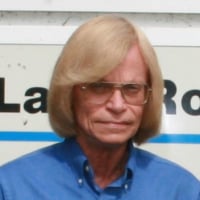Welcome! Here are the website rules, as well as some tips for using this forum.
Need to contact us? Visit https://heatinghelp.com/contact-us/.
Click here to Find a Contractor in your area.
If our community has helped you, please consider making a contribution to support this website. Thanks!
When Isn't It Cold Start?
Options
Richtdow
Member Posts: 22
in Oil Heating
Once a space has heated to the set temperature the radiators reach equilibrium with the ambient atmosphere in the space. Once a call for heat is made to the boiler, water between the temperatures of 150-180F will begin to circulate. However, the water that was already in the line and has reached equilibrium with the ambient temperature will begin returning to the boiler significantly reducing the boiler temperature below 140F.
In a non-cold start system this seems unavoidable. So when is a system not cold start? Is condensation of little concern so long as the temperature at boiler is maintained at or above 140F with the aforementioned exception?
In a non-cold start system this seems unavoidable. So when is a system not cold start? Is condensation of little concern so long as the temperature at boiler is maintained at or above 140F with the aforementioned exception?
0
Comments
-
-
First of all you should be starting the pump as soon as the boiler comes on, not after it heats up.
If a boiler is fired correctly the temperature should be way above condensation temperatures. The flame is over 2000 degrees and the flue gases should be over 300 degrees and there should be no condensation.1 -
Conventional boilers...
There should be a some sort of mixing valve arrangement which would bypass some of the returning colder water back to the system supply side. So the heat exchanger will have less water accross it, thus heating return water faster to 140 plus temps which of course limits condensation. The idea I belive is not to allow long periods of below 140F water temps. In the case of oil burners the condensation along with combustion products will create sulfuric acid. So that's bad.
I'm not a pro just so you know.
1 -
Thank you for your responses.
BDR529, Tankless does not come into the equation and it should be wired for cold start. However, I'll have another question about that in another thread. I originally wired it as tankless because my options were cold start or tankless and I didn't originally want cold start.
Captainco, that's my goal and I'm working on that at the moment.0 -
Also, for the cold start bypass, do you have any recommendations for the valve I should be using?0
-
> @Richtdow said:
> Once a space has heated to the set temperature the radiators reach equilibrium with the ambient atmosphere in the space. Once a call for heat is made to the boiler, water between the temperatures of 150-180F will begin to circulate. However, the water that was already in the line and has reached equilibrium with the ambient temperature will begin returning to the boiler significantly reducing the boiler temperature below 140F.
>
In a cold start application, the boiler is idle so the beginning of a heat demand doesn't necessarily mean its starting with 150°- 180°. It could also be at or near ambient room temperature. A cold start aquastat being a Normally Closed, open on temperature rise control, with a set or adjustable differential. This is an "A" aquastat. This control has no bearing on circulator function.
> In a non-cold start system this seems unavoidable. So when is a system not cold start?
In a non cold start, there is the addition of a "B" aquastat. Sometimes separate, sometimes as one "Dual" aquastat with an; A (Hi) and B (Lo) in one control. The Honeywell L8041B for example. The "B" aquastat is Normally Closed, open on temperature drop. This setting Is typically set at 20° or more below the Hi limit set point. The B control is, as you said, to maintain a minimum boiler temperature so, 1: in the case where a tankless coil is used, the B aquastat will interrupt the circuit to the circulators so the boiler doesn't run cold and you lose all your DHW. And, 2: to prevent the condensing of the flue gasses by the same process.
Is condensation of little concern so long as the temperature at boiler is maintained at or above 140F with the aforementioned exception?
@STEVEusaPA can clarify I'm sure because what I've got is hearsay and speculation.
With the mandate of ULSD, there is no longer the concern of sulfur oxide being formed in condensing conditions (but you still don't want it) with a cast iron boiler. The 3250 Plus as mentioned in your other thread has the option of circulator hold, which, even when used as a cold start aquastat, it will keep the circulator off until the boiler temperature exceeds the dew point. And one thing I never really understood, why only cast iron? Is steel not subject to the same corrosion (sulfur oxide)? I never was much of a science guy. Probably something with Ore in the answer.1 -
Thank you for your thorough answer!0
Categories
- All Categories
- 87.3K THE MAIN WALL
- 3.2K A-C, Heat Pumps & Refrigeration
- 61 Biomass
- 427 Carbon Monoxide Awareness
- 119 Chimneys & Flues
- 2.1K Domestic Hot Water
- 5.8K Gas Heating
- 114 Geothermal
- 165 Indoor-Air Quality
- 3.7K Oil Heating
- 76 Pipe Deterioration
- 1K Plumbing
- 6.5K Radiant Heating
- 395 Solar
- 15.6K Strictly Steam
- 3.4K Thermostats and Controls
- 56 Water Quality
- 51 Industry Classes
- 50 Job Opportunities
- 18 Recall Announcements

